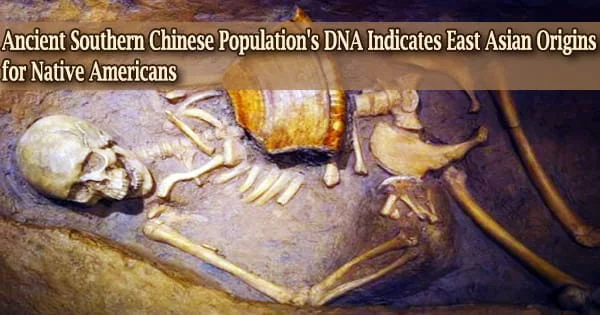The DNA of ancient human fossils from the Late Pleistocene in southern China has now been successfully sequenced. The information, which was released on July 14 (2022) in the journal Current Biology, implies that the unidentified hominin belonged to a maternal branch of modern humans that is now extinct and may have had a role in the ancestry of Native Americans.
“Ancient DNA technique is a really powerful tool,” Su says. “It tells us quite definitively that the Red Deer Cave people were modern humans instead of an archaic species, such as Neanderthals or Denisovans, despite their unusual morphological features,” he says.
The genomes of these fossils were compared to those of humans worldwide by the researchers. They discovered that the bones belonged to a person who had strong ties to Native Americans’ East Asian origin.
The scientists proposed that some of the southern East Asia people had journeyed north along the coastline of modern-day eastern China through Japan and reached Siberia tens of thousands of years ago after combining this discovery with other research findings. After that, they crossed the Bering Strait, which separates North America from Asia, and were the first humans to reach the New World.
The path leading to this discovery began more than 30 years ago, when a team of Chinese archaeologists found a sizable collection of bones in the Maludong, also known as the Red Deer Cave, in the Yunnan Province in southern China. The fossils were identified by carbon dating as being from the Late Pleistocene, which was roughly 14,000 years ago and during which time modern humans had spread out across the globe.
Researchers pulled a hominin skull cap with traits of both contemporary humans and prehistoric humans from the cave. The brain, for instance, appeared to be smaller than that of modern humans, and the skull’s shape matched that of Neanderthals.
Ancient DNA technique is a really powerful tool. It tells us quite definitively that the Red Deer Cave people were modern humans instead of an archaic species, such as Neanderthals or Denisovans, despite their unusual morphological features.
As a result, some scientists believed the skull most likely belonged to a community of hybrid archaic and modern people or to an unidentified archaic human species that thrived until very recently.
2018 saw the successful extraction of historic DNA from the skull by Bing Su of Kunming Institute of Zoology, Chinese Academy of Sciences, and his colleagues. They worked alongside Xueping Ji, an archaeologist at Yunnan Institute of Cultural Relics and Archaeology.
Genomic analysis reveals that the extinct maternal lineage of a group of modern humans, whose living descendants are now found in East Asia, the Indo-Chinese peninsula, and Southeast Asian islands, is where the hominin originated.
The discovery also demonstrates that human populations in southern East Asia possessed abundant genetic and morphological variation during the Late Pleistocene, to a higher extent than populations in northern East Asia had at the same time. It shows that some of the early humans who originally lived in eastern Asia did so in the south before relocating to the north, according to Su.
“It’s an important piece of evidence for understanding early human migration,” he says.
Using fossils from southern East Asia, particularly those that predate the Red Deer Cave people, the team’s next step is to sequence more ancient human DNA.
“Such data will not only help us paint a more complete picture of how our ancestors migrate but also contain important information about how humans change their physical appearance by adapting to local environments over time, such as the variations in skin color in response to changes in sunlight exposure,” Su says.
















